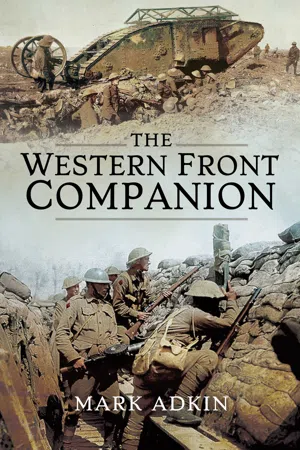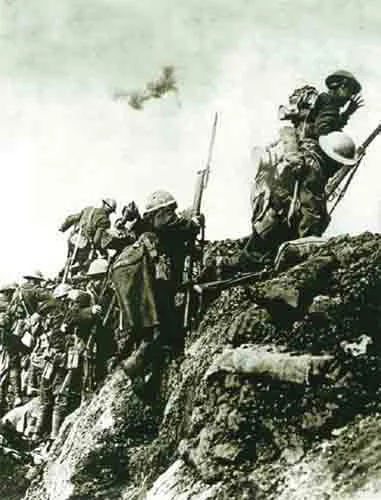
- 528 pages
- English
- ePUB (mobile friendly)
- Available on iOS & Android
The Western Front Companion
About This Book
The definitive guide to the main theater of WWI—"maps of the battles... military strategy... extraordinary anecdotes... it's a triumph" ( Daily Mail ). Written by the author of the three previous bestselling Companions on Waterloo, Trafalgar and Gettysburg—now acclaimed as the definitive work of reference on each battle— The Western Front Companion is not a mere chronological account of the fighting. Rather, it is an astonishingly comprehensive and forensic anatomy of how and why the armies fought, of their weapons, equipment and tactics, for over four long and bloody years on a battlefield that stretched from the Belgian coast to the Swiss frontier—a distance of 450 miles. Alongside the British Army, full coverage is given to Britain's allies—France, Belgium, Australia, New Zealand, Canada, South Africa, India and the United States—as well as the Germans. The 350, 000 words of text range over everything from the railways on the front to the medical corps and the chaplains. Like previous Companions, this book is equally distinguished by its magnificent visual resources—original and intricate maps and diagrams, over 200 resonant and remarkable archive images from the time (many rarely seen), and modern color photographs showing how historic battlefields look nowadays, and paying tribute to the magnificent and poignant cemeteries, monuments and ossuaries that mark the fallen for today's battlefield visitor. Every reader, no matter how well informed already on the history of World War I, will learn something new from this extraordinary and exhaustive volume. No one interested in the true story and sheer sweep of the Great War on the Western Front can afford to be without it.
Frequently asked questions
Information

Section One
A Western Front Timeline
men now even die, and kill one another, in an artificial manner.
1914
28 July | Austria on Serbia |
1 August | Germany on Russia |
3 August | Germany on France |
4 August | Germany on Belgium UK on Germany |
5 August | Montenegro on Austria-Hungary |
6 August | Austria-Hungary on Russia Serbia on Germany |
8 August | Montenegro on Germany |
12 August | France on Austria-Hungary UK on Austria-Hungary |
23 August | Japan on Germany |
25 August | Japan on Austria-I lungary |
28 August | Austria-Hungary on Belgium |
2 November | Russia on Turkey Serbia on Turkey |
5 November | UK on Turkey France on Turkey |
Table of contents
- Cover
- Title
- Copyright
- Contents
- Author’s Note
- Acknowledgements
- Key to Symbols
- Introduction: Why the World Went to War
- Section One: A Western Front Timeline
- Section Two: The Western Front Armies
- Section Three: Commanders and Staff
- Section Four: Infantry and Their Weapons
- Section Five: Artillery
- Section Six: Cavalry
- Section Seven: Engineers
- Section Eight: Supply and Transport
- Section Nine: Medical, Chaplains, Veterinary
- Section Ten: Tanks
- Section Eleven: Aviation
- Section Twelve: Trench Warfare
- Section Thirteen: Cambrai
- Epilogue
- Bibliography